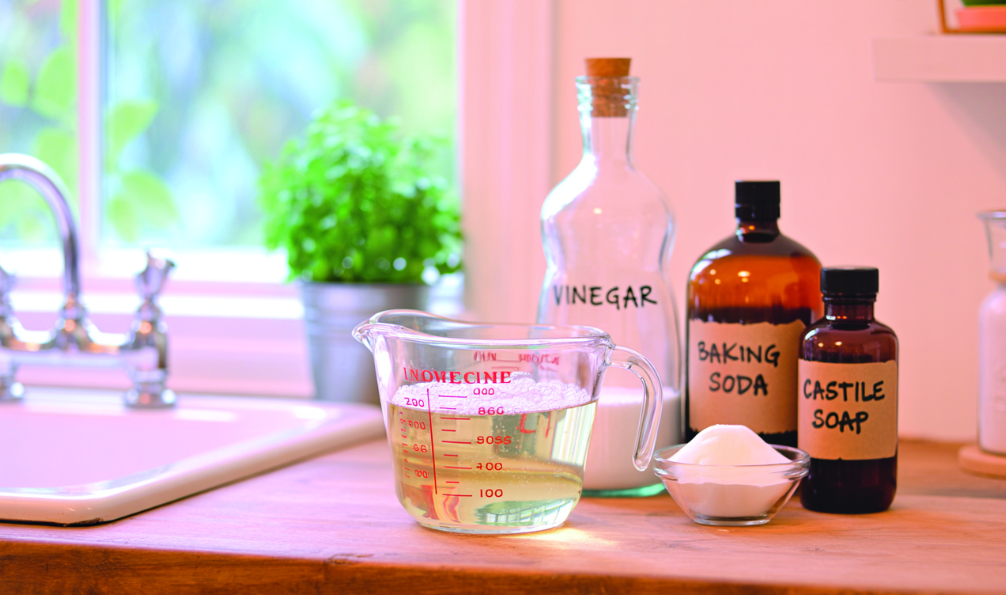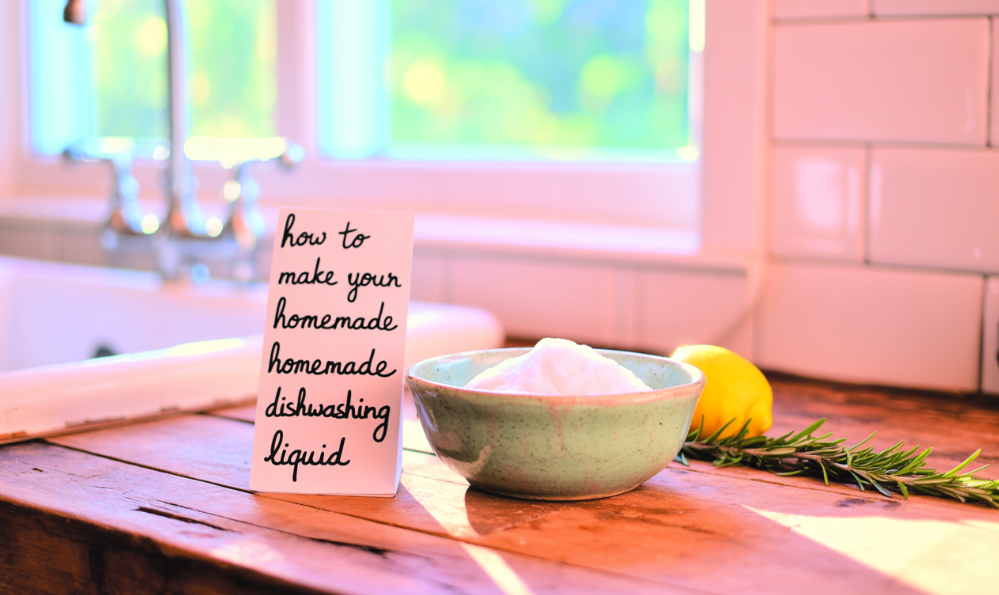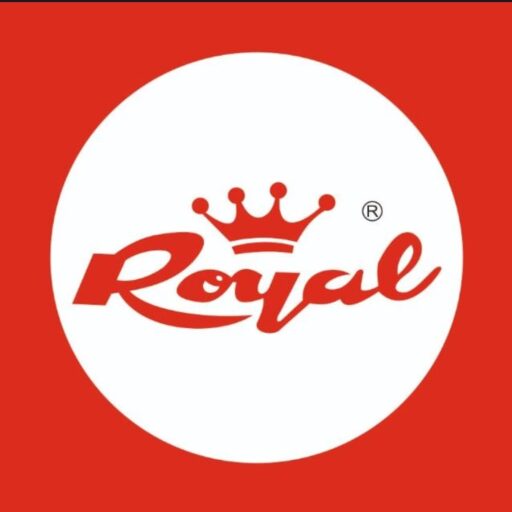Are you tired of using commercial dishwashing liquids? They often have harsh chemicals and artificial fragrances. What if you could create a cleaning solution that’s not only effective but also eco-friendly and gentle on your hands?
I found out making your own homemade dishwashing liquid is easy and saves money. By picking the right ingredients, you can skip the toxins in many commercial products. This way, you can make a solution that fits your needs perfectly.
Creating your own dishwashing liquid lets you choose what goes into it. This means you can make a non-toxic and eco-friendly cleaner for your home. I’ll show you how to do it step by step.
Key Takeaways
- Make a non-toxic and eco-friendly cleaning solution for your home.
- Control the ingredients to ensure a gentle and effective dishwashing liquid.
- Create a cost-effective alternative to commercial dishwashing products.
- Customize the recipe to suit your cleaning needs.
- Avoid harsh chemicals and artificial fragrances found in commercial products.
Why Switch to Homemade Dishwashing Liquid
Switching to homemade dishwashing liquid has many benefits. It’s good for the environment and can save you money. Making a few simple changes can help your home be greener and healthier.
Environmental Benefits
Homemade dishwashing liquid is better for the planet. It reduces plastic waste and uses ingredients that break down easily.
Reducing Plastic Waste
By making your own dish soap, you use less plastic. Just store it in a refillable container.
Biodegradable Ingredients
Homemade dish soap uses biodegradable ingredients. These are kinder to the environment and don’t harm fish and other sea creatures.
| Environmental Impact | Commercial Dish Soap | Homemade Dish Soap |
| Plastic Waste | High | Low |
| Biodegradability | Low | High |
Cost Savings
Homemade dish soap is also cheaper. You can buy ingredients in bulk and make lots at once.
Health Advantages
Homemade dish soap is better for your health. It avoids harsh chemicals that can irritate your skin and harm your health.
Avoiding Harsh Chemicals
Commercial soaps often have chemicals that can irritate your skin. Homemade soap, on the other hand, uses gentle, non-toxic ingredients.
Controlling What Goes on Your Dishes
When you make your own dish soap, you choose what goes on your dishes. This means your dishes are cleaned with safe, non-toxic homemade dish soap.
Essential Ingredients for Homemade Dishwashing Liquid
To make a homemade dishwashing liquid, you need a few key ingredients. These ingredients work together to create a strong, eco-friendly cleaner. It’s also gentle on your hands and the environment.
Base Cleaning Agents
The base of any good dishwashing liquid is its cleaning agents. These ingredients do the heavy lifting in cleaning.
Castile Soap
Castile soap comes from olive oil and is gentle yet effective. It’s also biodegradable and kind to your skin, making it perfect for homemade dishwashing liquid.
Washing Soda
Washing soda is key for fighting tough grease and food residue. It’s a natural mineral powder that makes your dishwashing liquid more powerful.
Grease-Cutting Components
Grease-cutting components are also crucial. They help remove stubborn food particles.
Vinegar
Vinegar is a natural degreaser. It cuts through tough grease and food residue. It also adds a fresh scent to your dishwashing liquid.
Citric Acid
Citric acid is another effective grease-cutting agent. It also removes mineral deposits, leaving dishes sparkling clean.
Natural Fragrances and Essential Oils
To make your homemade dishwashing liquid smell nice, use natural fragrances or essential oils. Lemon or lavender not only smell great but also add extra cleaning benefits.
Optional Additives for Enhanced Cleaning
You can add optional ingredients to make your dishwashing liquid even better. For example, a bit of baking soda can help control odors.
Edit
Delete
Tools and Equipment You’ll Need
Before you start making your homemade dishwashing liquid, gather all the tools and equipment you need. Having everything ready will make the process easier and faster.
Measuring Tools
Accurate measurements are key when making homemade liquid soap for dishes. You’ll need measuring cups and spoons to get the right amounts of each ingredient.
Mixing Containers
You’ll need a large mixing bowl or container to blend the ingredients. Choose one that’s easy to clean and big enough to hold all the ingredients.
Storage Bottles
After you’ve made your homemade dishwashing liquid, you’ll need bottles to store it. Pick bottles that are clean, dry, and have tight lids.
Safety Equipment
When making diy dish soap for sensitive skin, safety is crucial. Wear protective gear and make sure the area is well-ventilated.
Gloves and Eye Protection
Wearing gloves and eye protection helps prevent skin irritation and eye splashes. These simple steps can make a big difference.
Ventilation Considerations
Good ventilation is important when mixing ingredients for homemade dishwashing liquid. Open windows or use a fan to keep the air moving and avoid inhaling fumes.
| Tool/Equipment | Purpose |
| Measuring Cups and Spoons | Accurate ingredient measurement |
| Mixing Containers | Blending ingredients together |
| Storage Bottles | Storing the final product |
| Gloves and Eye Protection | Protecting against skin and eye irritation |

Basic Homemade Dishwashing Liquid Recipe
With just a few ingredients, you can make a homemade dishwashing liquid. It cuts grease and saves money. This recipe is perfect for those who want to switch from commercial soaps to something better for the environment and their wallet.
Ingredient List
To make this homemade dishwashing liquid, you’ll need the following ingredients:
- 1 cup of water
- 1/2 cup of washing soda
- 1/4 cup of liquid castile soap
- 1 tablespoon of white vinegar
- Optional: 10 drops of lemon essential oil for fragrance
Step-by-Step Mixing Instructions
Follow these steps to mix your homemade dishwashing liquid:
Proper Order of Adding Ingredients
First, mix the water and washing soda in a bowl until the washing soda is fully dissolved. Then, add the liquid castile soap and stir gently. Finally, add the white vinegar and mix well.
Mixing Techniques
It’s essential to mix the ingredients gently to avoid creating excessive suds. Stir the mixture until it’s well combined and there are no visible soap particles.
Consistency Adjustments
Depending on your preference, you may want to adjust the consistency of your homemade dishwashing liquid.
Thickening Options
If you prefer a thicker consistency, you can add a little more washing soda. Mix well and test the consistency.
Thinning Solutions
If the mixture is too thick, you can thin it out with a small amount of water. Mix well until you achieve the desired consistency.
By following this basic recipe, you can create a cost-effective homemade dishwashing liquid. It’s easy to make and effective at cutting grease. Enjoy the benefits of a quick homemade dish soap that’s also gentle on your hands.
Advanced Homemade Dishwashing Liquid for Tough Stains
Take your dishwashing to the next level with a homemade liquid for tough stains. This formula is a game-changer when regular soap isn’t enough. The right ingredients can make a big difference in cleaning up stubborn food.
Powerful Grease-Fighting Ingredients
The secret to a great homemade dishwashing liquid is in its ingredients. Use washing soda and castile soap for their grease-fighting power. A splash of lemon essential oil adds a fresh scent and boosts cleaning.
| Ingredient | Function | Quantity |
| Washing Soda | Grease Fighter | 1 cup |
| Castile Soap | Cleaning Agent | 1/2 cup |
| Lemon Essential Oil | Freshener & Enhancer | 10 drops |
Mixing Process
To create this advanced dishwashing liquid, mix washing soda and castile soap in a bowl. Add water slowly until it’s the right consistency. Stir in the lemon essential oil last.
Usage Guidelines
For tough stains, the right application is key. Try soaking dishes or applying the liquid directly to the stain.
Soaking Methods
Soaking dishes in warm water and homemade liquid can loosen tough residue. Let it soak for 30 minutes before washing.
Direct Application Techniques
For really tough stains, apply the liquid directly. Let it sit a few minutes, then scrub and rinse.
Gentle Homemade Dishwashing Liquid for Sensitive Skin
Making a gentle dishwashing liquid at home is easy and helps protect sensitive skin from irritation.
Hypoallergenic Ingredients
Choosing hypoallergenic ingredients is key to making a dishwashing liquid that’s gentle on hands.
These ingredients are less likely to cause allergic reactions. They’re great for sensitive skin. For example, decyl glucoside and coco-glucoside come from natural sources like coconut and glucose.
Skin-Safe Alternatives
Look for skin-safe alternatives to harsh chemicals. Instead of SLS, use Sodium Lauryl Sulfoacetate, a milder surfactant.
Ingredient Substitutions
If an ingredient irritates your skin, swap it out. For instance, if essential oils irritate you, try a fragrance-free version or a gentler essential oil.
Preparation Method
To make your dishwashing liquid, mix your chosen ingredients in the right amounts.
Start by mixing surfactants with water. Then add ingredients like glycerin for moisture or essential oils for scent. Mix slowly to avoid too much foam.
Benefits for Sensitive Hands
Using a homemade dishwashing liquid for sensitive skin has many benefits.
It lowers the risk of irritation and allergic reactions. It also keeps your skin’s natural moisture barrier intact. This is crucial for those who wash dishes often.
| Ingredient | Benefit | Skin Safety |
| Decyl Glucoside | Gentle Surfactant | Hypoallergenic |
| Coco-Glucoside | Natural Cleansing | Skin-Safe |
| Glycerin | Moisturizing | Non-Irritating |
gentle homemade dishwashing liquid
Creating Scented Variations of Your Homemade Dishwashing Liquid
Making your own dishwashing liquid lets you pick the scent. You can use essential oils and fragrances to make a soap that cleans well and smells nice.
Citrus Fresh Blend
A citrus fresh blend is a favorite for its refreshing scent. You can mix different citrus essential oils to get this smell.
Lemon and Orange Combinations
Combining lemon and orange essential oils gives a bright and uplifting smell. This scent is not only nice but also fights bacteria.
Grapefruit Zest Option
Adding grapefruit essential oil gives a tangy scent. Grapefruit zest can add a special touch to your citrus mix.
Herbal Garden Mix
For a softer scent, try an herbal garden mix. This blend uses essential oils from herbs.
Lavender and Mint
Lavender and mint essential oils make a calming yet refreshing scent. Lavender soothes, while mint cools.
Rosemary and Thyme
Mixing rosemary and thyme essential oils gives a strong herb scent. This smell is not only nice but also helps clean.
Spice-Infused Options
Spice-infused options have a warm and inviting scent. Try essential oils from spices like cinnamon or clove.
Here’s a simple comparison of the different scent options:
| Scent Option | Essential Oils Used | Characteristics |
| Citrus Fresh Blend | Lemon, Orange, Grapefruit | Refreshing, Uplifting, Antibacterial |
| Herbal Garden Mix | Lavender, Mint, Rosemary, Thyme | Soothing, Calming, Herbaceous |
| Spice-Infused | Cinnamon, Clove | Warm, Inviting, Spicy |
By trying out different essential oils and scents, you can make a dishwashing liquid that’s not just good at cleaning but also smells great and is your own.

Tips for Using Your Homemade Dishwashing Liquid Effectively
To get the most out of your homemade dishwashing liquid, follow these simple yet effective tips.
Proper Dilution Techniques
Using the right dilution ratio is crucial for effective cleaning. A general rule of thumb is to mix 1 tablespoon of homemade dishwashing liquid with 1 cup of warm water.
Tip: Adjust the ratio based on the level of soil on your dishes. Heavily soiled dishes may require a stronger solution.
Tackling Different Types of Dishes
Different dishes require different care. Here’s how to tackle various types:
Glassware and Delicate Items
For glassware and delicate items, use a diluted solution to avoid any residue. A soft sponge or cloth is recommended to prevent scratching.
Pots and Pans with Baked-on Food
For pots and pans with baked-on food, let them soak in hot water mixed with your homemade dishwashing liquid before scrubbing.
Maximizing Cleaning Power
To maximize the cleaning power of your homemade dishwashing liquid, consider the following strategies:
Hot Water Benefits
Hot water helps in dissolving grease and food residue more effectively. Use hot water when washing dishes, especially those with baked-on food.
Soaking Strategies
Soaking dishes before washing can significantly reduce the effort required to clean them. Use your homemade dishwashing liquid in the soaking water for better results.
| Dish Type | Recommended Dilution | Additional Tips |
| Glassware | 1:10 | Use a soft sponge to avoid scratches. |
| Pots and Pans | 1:5 | Soak before washing for easier cleaning. |
| Delicate Items | 1:10 | Avoid using abrasive materials. |
Troubleshooting Common Homemade Dishwashing Liquid Problems
Homemade dishwashing liquid has many benefits. But, it can sometimes have problems. Issues like separation, not cleaning well, bad smells, and skin irritation can happen. Luckily, there are ways to fix these common issues.
Separation Issues
If your homemade dishwashing liquid separates, it might be because of an ingredient imbalance. Shaking the bottle well before use can often fix this. If it still happens, try changing the ratio of your cleaning agents.
Insufficient Cleaning Power
If your dishwashing liquid doesn’t cut through grease well, you might need to adjust the amount of grease-cutting components. Adding more of these ingredients can help it clean better.
Unpleasant Smell Development
An unpleasant smell can happen if your dishwashing liquid isn’t stored right. Keeping it in a cool, dry place and making sure the bottle is sealed tight can stop this.
Skin Irritation Solutions
If you get skin irritation, it could be because of sensitivity to certain ingredients. Try switching to hypoallergenic ingredients or wearing gloves when washing dishes.
| Issue | Solution |
| Separation | Shake well, adjust ingredient ratio |
| Insufficient Cleaning Power | Add more grease-cutting components |
| Unpleasant Smell | Store in a cool, dry place |
| Skin Irritation | Use hypoallergenic ingredients, wear gloves |
Conclusion
Making your own dishwashing liquid is easy and has many benefits. It helps the environment and keeps your skin healthy. By using the recipes and tips given, you can make a safe, green cleaning solution that fits your needs.
Whether you’re making dishwashing liquid for yourself or in large amounts, you’re moving towards a greener life. This change helps cut down on plastic waste and harsh chemicals in store-bought cleaners. Making your own dishwashing liquid means a cleaner home, cost savings, and peace of mind from using natural products.
Exploring homemade cleaning solutions can greatly benefit your home and the planet. By making dishwashing liquid in bulk, you’re taking a big step towards a healthier, greener home. This simple action can make a big difference for you and your family.
FAQ
What are the benefits of using homemade dishwashing liquid over commercial products?
Homemade dishwashing liquid is better for the planet. It cuts down on plastic waste and is gentler on the environment. It also saves money and avoids harsh chemicals that can harm your skin or health.
Can I customize the scent of my homemade dishwashing liquid?
Yes, you can. Add different essential oils or natural fragrances. Choose from citrus, herbal, or spice-infused scents. This way, you can make a dish soap that smells great and fits your taste.
Is homemade dishwashing liquid suitable for sensitive skin?
Yes, it is. Use hypoallergenic ingredients and make a few simple changes. This way, you can create a gentle dishwashing liquid that’s safe for sensitive skin and reduces irritation.
How do I adjust the consistency of my homemade dishwashing liquid?
Adjust the consistency by adding more washing soda or castile soap to thicken it. Or, thin it with water if you prefer a lighter viscosity.
Can I make homemade dishwashing liquid in bulk?
Yes, making it in bulk is cost-effective and convenient. Just make sure to store it properly to keep it effective.
What are some tips for using homemade dishwashing liquid effectively?
For best results, dilute it correctly and use hot water. Soak tough stains before washing. Adjust your washing method based on the dishes you’re cleaning.
How can I prevent separation issues in my homemade dishwashing liquid?
Prevent separation by mixing ingredients well and using the right amounts. Adding a stabilizer can also help keep it consistent.
Is homemade dishwashing liquid eco-friendly?
Yes, it can be. Use biodegradable ingredients and refillable containers. Choose natural, non-toxic components for a greener option.
Can I use homemade dishwashing liquid for camping or outdoor activities?
Yes, it’s a great choice for camping or outdoor activities. It’s biodegradable and effective. Just rinse well and follow local rules.
🧴 Prefer a Ready-Made, Natural Dishwashing Liquid?
If DIY isn’t your thing or you simply want a quick, safe, and effective solution, try Royal & Co’s Natural Dishwashing Liquid — crafted with care to balance tough grease removal with skin-friendly, eco-conscious ingredients. It’s the perfect option for those who love the purity of homemade products but want the convenience of a professionally made formula.
💧 Made with biodegradable ingredients
🛡️ Tough on grease, gentle on hands
🌱 No harmful chemicals, no compromise
Ready to upgrade your dishwashing experience?
👉 Explore Royal & Co’s Dishwash Range now.





